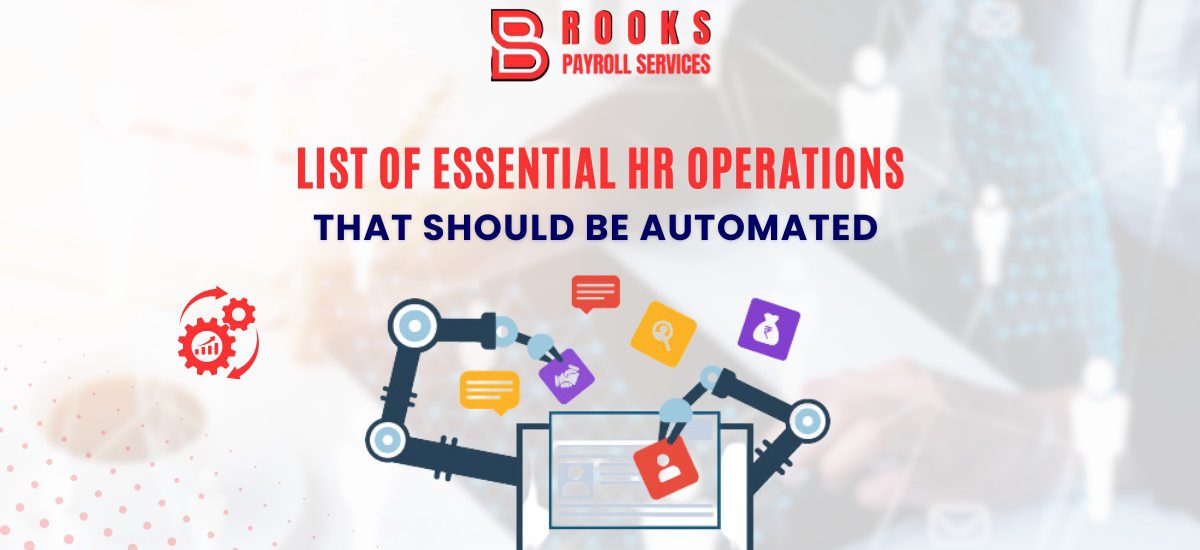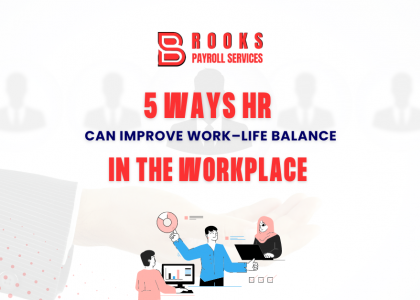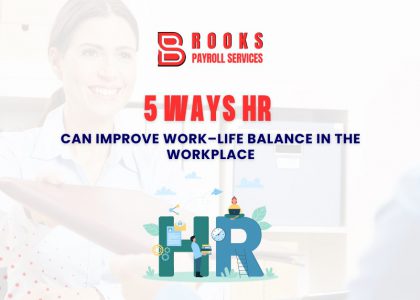Understanding the Role of HR Operations
Human Resources (HR) is the backbone of any organization, ensuring that employees are well-managed, compliant, and motivated. However, as businesses grow, managing HR operations manually can become a daunting task, leading to inefficiencies, errors, and frustrations. This is where automation steps in, offering a seamless way to manage these operations effectively.
The Growing Need for Automation in HR
In today’s fast-paced business environment, the need for automation is more significant than ever. HR departments are expected to manage a wide range of tasks, from payroll processing to employee onboarding, and doing so manually can be both time-consuming and error-prone. By automating essential HR operations, organizations can free up valuable time, reduce the risk of errors, and focus on more strategic initiatives.
Core HR Operations to Automate
Payroll Management
Why Automating Payroll is Crucial
Payroll is one of the most critical HR functions, ensuring that employees are paid accurately and on time. However, manual payroll processing is fraught with challenges, including calculation errors, missed deadlines, and compliance risks. Automating payroll not only eliminates these issues but also ensures that payroll is processed consistently and efficiently.
Key Benefits of Payroll Automation
Automating payroll offers numerous benefits, such as reducing errors, ensuring compliance with tax regulations, and saving time on repetitive tasks. Additionally, automated payroll systems can integrate with time and attendance tracking, further streamlining the process and ensuring that employees are paid for the exact hours worked.
Employee Onboarding
Streamlining the Onboarding Process
Employee onboarding is a critical process that sets the tone for a new hire’s experience within the organization. By automating onboarding, HR teams can ensure that all necessary paperwork is completed, training materials are distributed, and new hires are introduced to company policies in a consistent and timely manner.
Ensuring Compliance and Consistency
Automated onboarding systems also help maintain compliance by ensuring that all necessary documents are collected and stored securely. This consistency not only improves the onboarding experience for new employees but also protects the organization from potential legal issues.
Time and Attendance Tracking
The Challenges of Manual Tracking
Manually tracking employee time and attendance can be labor-intensive and prone to errors. Employees might forget to clock in or out, leading to inaccurate records, which can affect payroll and labor cost calculations.
Advantages of Automated Time Tracking Systems
Automated time and attendance systems eliminate these issues by accurately recording employee hours, reducing the risk of time theft, and ensuring that payroll is based on precise data. These systems can also generate reports that help HR teams monitor attendance patterns and address any issues proactively.
Performance Management
Traditional vs. Automated Performance Reviews
Performance management is essential for employee development, but traditional methods often rely on infrequent reviews that can be biased or incomplete. Automating performance management allows for continuous feedback, enabling employees to make real-time improvements and stay aligned with organizational goals.
Real-Time Feedback and Continuous Improvement
Automated systems provide tools for real-time feedback, allowing managers and employees to track progress against goals, identify areas for improvement, and celebrate achievements as they occur. This continuous improvement cycle leads to higher employee engagement and productivity.
Employee Data Management
Centralizing Employee Records
Keeping employee records organized and up-to-date is vital for HR teams. Automated data management systems centralize employee information, making it easy to access and update records as needed. This centralization also reduces the risk of data loss or errors that can occur with manual record-keeping.
Enhancing Data Security with Automation
Data security is a top concern for HR departments, as they handle sensitive employee information. Automated systems offer enhanced security features, such as encryption and access controls, ensuring that employee data is protected from unauthorized access.
Benefits Administration
Simplifying Benefits Enrollment
Managing employee benefits can be complex, with various plans, enrollment periods, and eligibility criteria to consider. Automating benefits administration simplifies the process by allowing employees to enroll in and manage their benefits online, reducing the workload for HR teams and minimizing errors.
Monitoring Benefits Utilization Automatically
Automated systems can also track benefits utilization, providing insights into how employees are using their benefits and identifying opportunities to optimize offerings. This data-driven approach helps organizations provide better benefits while controlling costs.
Recruitment and Applicant Tracking
Streamlining Candidate Screening
Recruitment is a time-consuming process, and manually screening candidates can be overwhelming. Automated applicant tracking systems (ATS) streamline this process by filtering resumes, scheduling interviews, and tracking candidate progress, ensuring that the best candidates are identified quickly and efficiently.
Enhancing Candidate Experience with Automation
Automation also improves the candidate experience by providing timely communication, reducing wait times, and keeping candidates informed throughout the hiring process. A positive candidate experience can enhance the organization’s reputation and attract top talent.
Advanced HR Operations to Automate
Learning and Development (L&D)
Personalized Training Programs
Learning and development are crucial for employee growth, but one-size-fits-all training programs are often ineffective. Automated L&D systems can deliver personalized training based on an employee’s role, skills, and career goals, making learning more relevant and engaging.
Tracking Employee Progress
These systems also track employee progress, providing insights into skill development and identifying areas where additional training may be needed. This continuous learning approach helps employees stay up-to-date with industry trends and enhances overall organizational performance.
Compliance Management
Automating Policy Updates
Compliance is a critical aspect of HR, and staying up-to-date with ever-changing regulations can be challenging. Automating compliance management ensures that company policies are regularly updated and communicated to employees, reducing the risk of non-compliance and associated penalties.
Ensuring Compliance with Local Regulations
Automated systems can also monitor compliance with local labor laws and regulations, alerting HR teams to potential issues before they become problems. This proactive approach helps organizations maintain compliance and avoid costly legal disputes.
The Future of HR Automation
As technology continues to advance, the scope of HR automation will only expand. From AI-driven recruitment to blockchain-based data management, the future of HR will be defined by innovative solutions that streamline operations, enhance employee experiences, and drive organizational success.
Final Thoughts on Automating HR Operations
Automation is no longer a luxury but a necessity for modern HR departments. By automating essential HR operations, organizations can improve efficiency, reduce costs, and focus on strategic initiatives that drive growth. The future of HR is automated, and those who embrace this change will be better positioned for success.
FAQs
What are the most important HR operations to automate?
Payroll management, employee onboarding, time and attendance tracking, and performance management are some of the most critical HR operations that should be automated to improve efficiency and reduce errors.
How does automation improve HR efficiency?
Automation streamlines repetitive tasks, reduces errors, ensures compliance, and frees up HR teams to focus on more strategic activities, ultimately improving overall efficiency.
Can small businesses benefit from HR automation?
Yes, HR automation is beneficial for businesses of all sizes. It helps small businesses manage HR tasks more efficiently and cost-effectively










